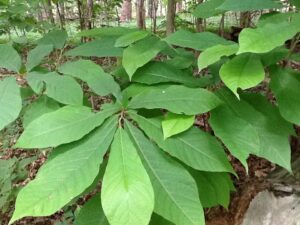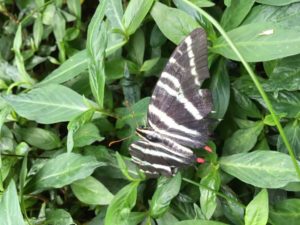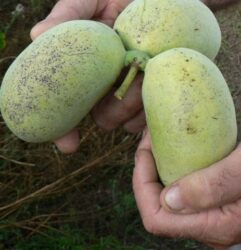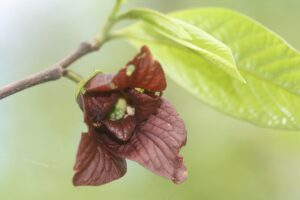By Bernheim
Pawpaw (Asimina triloba)

Pawpaw is a common understory tree in Bernheim. You’ll find several pawpaw patches on the Bent Twig Trail, near a circular sitting area.

The leaves are large, simple with smooth margins, and alternately arranged on the twigs. Their odor is similar to green peppers. They contain a toxic chemical (acetogenins) which gives the foliage insecticidal properties, deterring many insect predators. One exception is the larvae of the zebra swallowtail butterfly which feeds exclusively on the leaves of this genus. Thus pawpaw trees and their leaves are important to the life cycle of this lovely butterfly.

The fruit of the pawpaw is great for fattening up both humans and wildlife like opossums, skunks, and raccoons. Some liken the taste of a pawpaw to a ripe banana, but to me it tastes like a mango that’s lost its tango!
Questions to Ponder at Bernheim
 The flowers of the pawpaw are the color of carrion (meat). What do you think might pollinate these flowers?
The flowers of the pawpaw are the color of carrion (meat). What do you think might pollinate these flowers?
Why are there so many pawpaw trees of the same size growing together?
Additional Resources:
“Way Down Yonder in the Pawpaw Patch” is a song that arose from Appalachian mountain regions. Many school children in these areas and beyond sang and danced to the pawpaw song. Check out this version.
Gastropod, a podcast that examines food through the lens of science and history, featured an excellent episode about the pawpaw.

